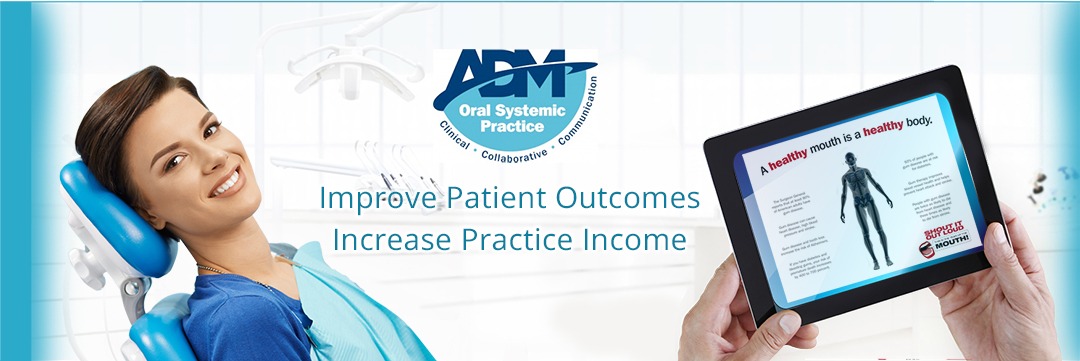No self respecting discussion about communicating with patients of record would be complete without including social networking. Here are a few statistical tidbits, according to Socialnomics’ “Social media (is not) a fad: It is the biggest shift since the Industrial Revolution.”:
No self respecting discussion about communicating with patients of record would be complete without including social networking.
Here are a few statistical tidbits, according to Socialnomics’ “Social media (is not) a fad: It is the biggest shift since the Industrial Revolution.”:
- As of 2010, Gen Y outnumbers Baby Boomers, and it is this group that has been raised ‘on’ the Internet.
- Ninety six percent of them have joined at least one social network.
- One out of eight couples married in 2009 met on the Internet.
- It took 38 years for there to be 50 million radios users,
- 13 years for TV,
- 4 years for the Internet,
- 3 years for the IPOD. And,
- It took Facebook 9 months to reach 100 MILLION USERS
- If Facebook were a country, it would be the world’s Fourth Largest
- The fastest growing segment on Facebook is 55-65 year old females
So, if you think social media is just a fad, think again.
Where to begin
The first social media sites to become involved with are Facebook, Twitter, YouTube, and LinkedIn. MySpace is another possibility, but may not match your practice demographic as closely as the others. Books and other resources are available on each of these, but the most direct, and least cost, method for getting started is simply to visit each of their home pages, and register for an account.
Facebook and Twitter are extremely popular sites and make it rather simple to create a presence on their platforms. With YouTube you can upload your own videos, as well as link to them from your own website (you can also view other videos that might interest you, but this will not help grow your practice!)
LinkedIn is used more for business than social interaction, but can be a useful way to get the word out to your patients (most of whom, after all, are involved in some form of business). If you are specialist, LinkedIn can be an especially powerful tool for communicating with referring practices.
As with any new endeavor, getting started can be a daunting proposition. I recommend you budget a certain amount of time per week, and, if possible, delegate the work to someone who is motivated and, with hope, already knowledgeable about, the subject.
Once you’ve registered and set up your profile, you are ready to begin building your tribe that is, inviting people to friend you.
Facebook makes it easy for you to find and invite people to become friends with you (or at least, with your Facebook Profile). We can also thank Facebook for making the word ‘friend’ a verb as well as a noun.
This involves setting up Facebook correctly as well as actively encouraging people to become your Friend. Facebook can also help in this regard, but do not depend exclusively on Facebook to do this job.
Tips for being found by current (and prospective) patients on Facebook
As with search engine optimization, you can grow your practice using Facebook through organic and paid search, and below I offer 5 tips to help you grow organically. Readers are also invited to receive a report presenting tips on setting up a Facebook paid search campaign.
Optimizing your pages within Facebook
Tip #1: Own your Brand. One of the first things to do when setting up a like (formerly fan) page in Facebook is select a name. It seems easy enough, but far too many people try to get ‘tricky’ with their name choices. Some people, thinking in Google terms, go with a name like Dentist – Philadelphia – Cosmetic Dentist – General Dentist – Philly Area Dentist – etc.
This may have been the way of the world in the Google Age, but it just doesn’t work for Facebook. If your practice is called “Dental Associates of Philadelphia,” that’s exactly what your Facebook page should be called! Your practice name is your brand, and that’s how you want to be recognized, so name your page after your practice and don’t change it.
Tip #2: Tell Everyone About Yourself. This is actually one area where the Google way of thinking can help you, and your main website. The Facebook “About” box allows you to elaborate upon your practice for 250 characters. Use every character and use them wisely. Make sure to mention the following things early and often:
- Your practice name
- Your target area: whatever neighborhoods, cities, counties, or region you wish to target
- Your specialties: mention all your most prominent services
A good rule of thumb is to place as much of the text from your website’s homepage as possible into your “About” box. This will not only help Facebook members see who you are; it can also help your main website’s ranking with Google.
Tip #3: There’s No Such Thing as Bad Info. Here’s another great opportunity to not only to enhance your Facebook page’s performance, but also that of your website. Complete all fields on the “Info” tab. Again, your website can be a great source of content for your Facebook page. Include your address, hours of operation, phone number, and link to your website.
Your Facebook page is also a great place to post photos of your practice and team members. The more useful the information you pack onto your Facebook page, the more effective it will be, both on its own, and in complementing your website.
Tip #4: Build your Network. As a dental practice, you already have a group of friends out there and many, if not most, are on Facebook. Once you have your Facebook page successfully set up, it’s time to start recruiting your patients to join. If you have an email list of existing patients, send them an invitation. If you have a computer and/or wireless access in your reception area, remind your patients you are on Facebook and ask them to join your page, (which should be your default page). Most, if not all, your patients will be happy to join your page. You just need to ask!
Tip #5: How to Post, When to Post, What to Post. Now that you’ve successfully set up your Facebook page and built a network of friends, what’s next? It’s time to plan your posting schedule. Tread carefully. Facebook makes it easy for your fans to choose to ignore you. It only takes two clicks for your fan to never see your updates again. If you’re judicious with your posts, this should not be a problem.
The most important thing to remember when posting on your page is that all your friends will see the post in their “News Feed.” Ask yourself whether you think it’s something they would like to see. If you have a new member of your dental team joining the office, Facebook is a great place to make that Announcement. If you ordered pizza for lunch and it showed up 20 minutes late, you may want to reconsider making that post.
To my mind, the art of effective social networking comes into play in the crafting of your communications campaign and content of the messages comprising your campaign. Your overriding objective is to ensure your friends read your posts and, with hope, derive something of value from them. Posting every once in a while when you see a great article about dental health is a good idea. You can also use your posts to promote your practice (perhaps a Facebook ‘Friend Only’ Whitening Certificate for just before the holidays).
Simply put, when you do post to your friends, make it count.
Summary
As you can see, there’s no shortage of information to consider in crafting your social media marketing strategy, Thepractice that chooses to take advantage of this burgeoning opportunity will more quickly grow their practice. Set a realistic implementation schedule for yourself so you are not overwhelmed by the scope and breadth of the task.
Our next Issue will conclude our discussion about Communicating with Patients of Record by focusing on how to use online review sites such as Yelp, Angie’s List, City Search, DrOogle and Health Grades to grow your practice, which serves to underscore that communication is indeed a two-way street.
Daniel Bobrow, MBA, is president of the American Dental Marketing Company, a dentistry marketing and patient communications consultancy. He is also Executive Director of Dentists’ Climb for a Cause™. Readers interested in learning more about integrated marketing and patient communication products, systems and services are invited to contact Mr. Bobrow at 312-455-9488 or DBobrow@AmericanDentalMarketing.com or visit AmericanDentalMarketing.com.




